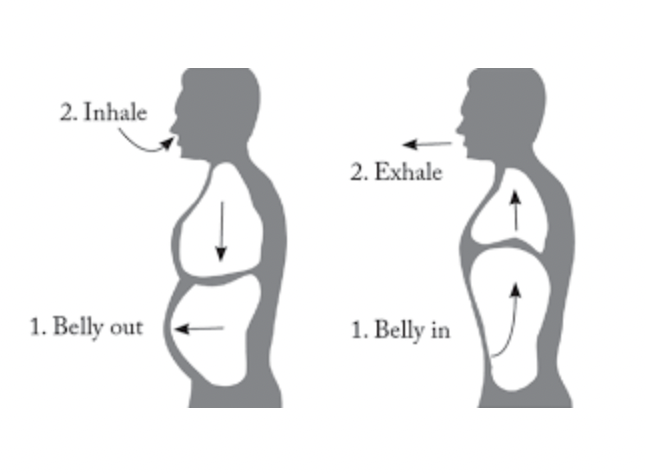Feeling Bloated at Day’s End? You May Suffer from Abdomino-phrenic Dyssynergia.
Someone who suffers from Abdomino-phrenic dyssynergia (APD) will notice that upon waking their stomach is fairly flat. However, at the end of the day it will be very bloated and distended, regardless of if the person has moved their bowels or not. APD is a relatively new diagnosis.
What is it?
According to Accarino 2009:
“It is a contraction of the diaphragm in a dyssynergic pattern with the abdominal wall. It is of unknown etiology but it is speculated that patients with gastrointestinal disorders and bloating have increased intestinal sensitivity. Due to this, the patient's body may automatically alter the way it coordinates breathing with abdominal wall contraction.”
What does this mean?
First, it is helpful to understand how the diaphragm normally functions:
When inhaling, the diaphragm lengthens towards your feet. The abdomen distends or relaxes.
When exhaling, the diaphragm contracts and lifts towards your head, the abdomen pulls in or contracts.
In the diagram below, the top, white-section of the image is the diaphragm. The bottom, white-section is the abdomen/abdominal contents. You can see that as you inhale, the diaphragm descends down and the belly goes out. When exhaling, the reverse happens.
https://www.inspiredphysio.com.au/diaphragm-breathing/
With APD, this is what happens:
When exhaling, the diaphragm- the muscle that controls breathing-contracts. Normally the diaphragm should relax and lengthen as you exhale.
As a result, the abdominal contents are pushed downward, for example organs get pushed lower than they should be.
The abdominal wall relaxes and therefore can distend causing bloating.
The upper chest and ribs get filled with air and may cause shortness of breath.
How can it be treated?
With APD, it is poor coordination between diaphragm and abdomen that seem to cause the issue. Pelvic floor physical therapists fully understand how the pelvic floor and diaphragm work together. As a result, they can treat APD effectively.
Effective treatment requires that these areas of the body be assessed:
Thoracic spine and associated muscles
Psoas/hip flexor muscles
Diaphragm, stomach, esophagus
Rib alignment
Abdominal strength and coordination
Pelvic floor strength and coordination
Treatments may include:
Manual techniques including soft tissue work, myofascial techniques, rib mobilizations
Biofeedback to coordinate abdominis and diaphragm
Strengthening and coordinating breathing
Postural exercises
Pelvic floor specific treatments
If you have been diagnosed with APD, we can help you. Email us at info@solsticept.com or call us at (929) 269 2505 to request a free 15-minute phone consultation.

